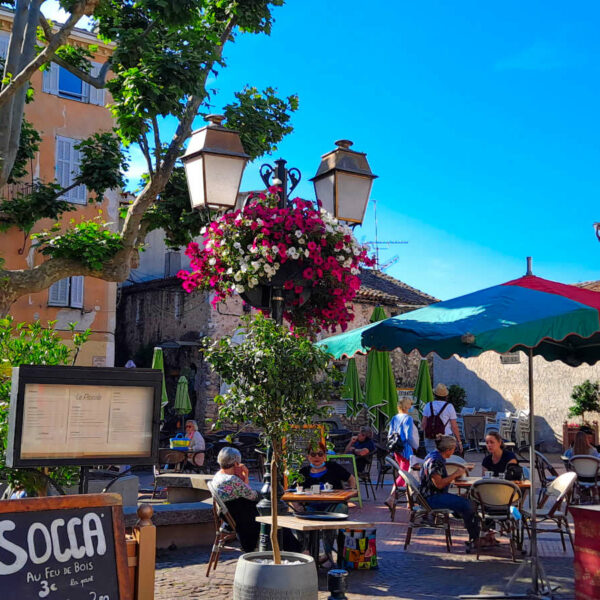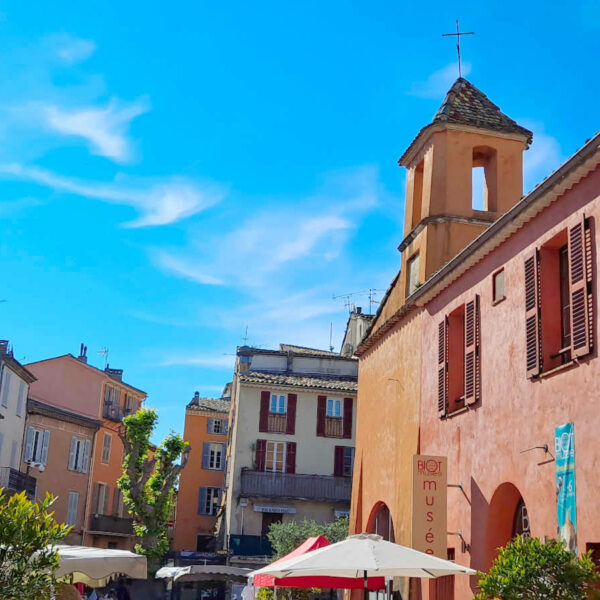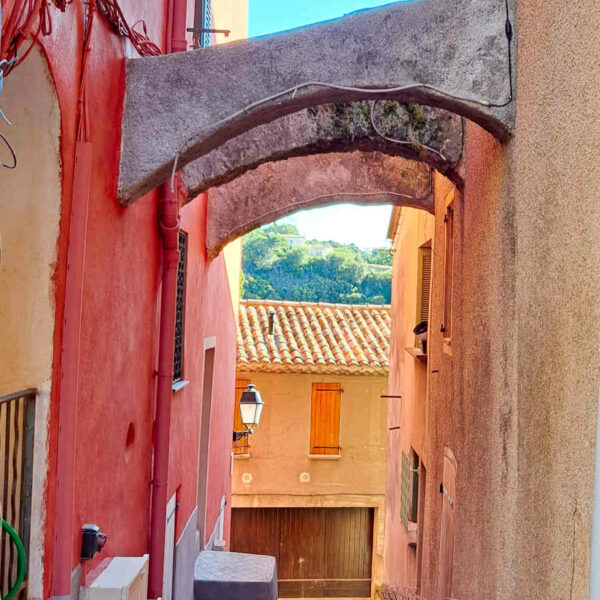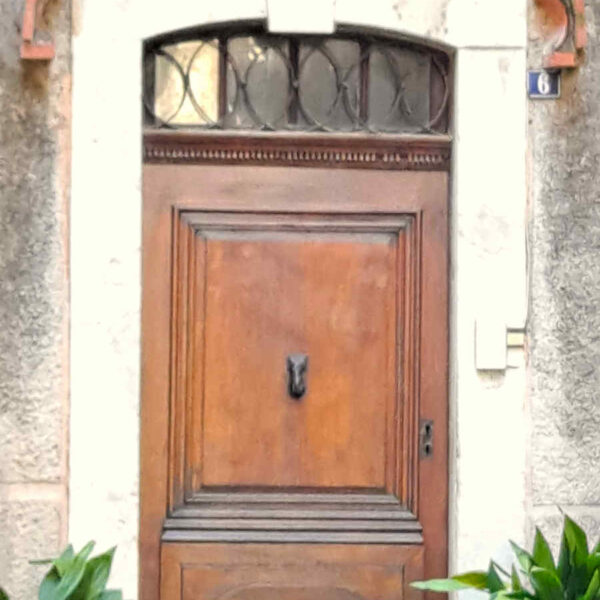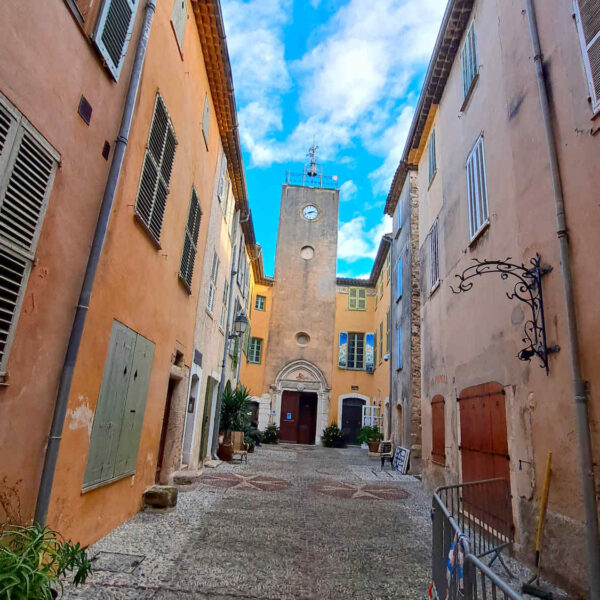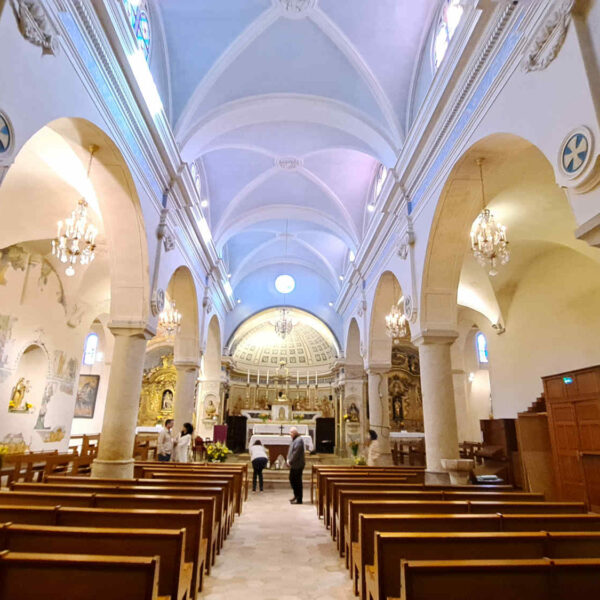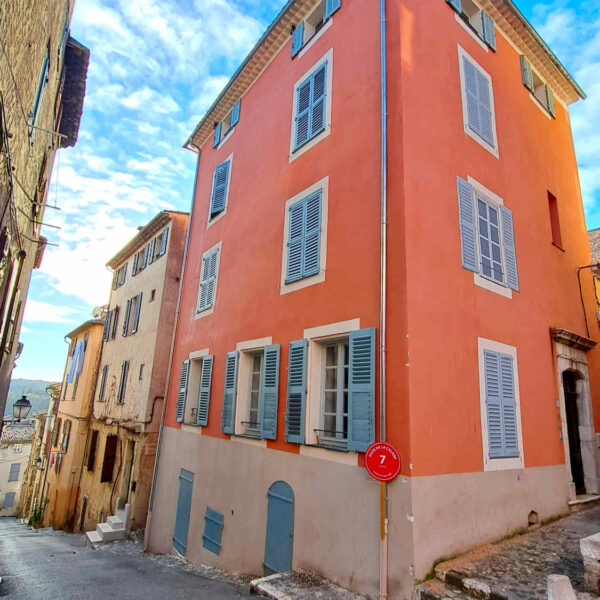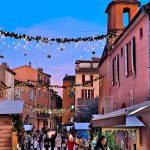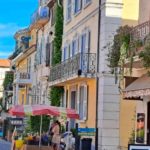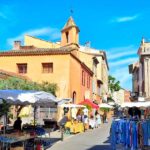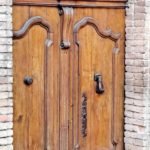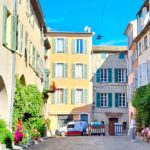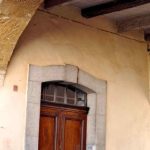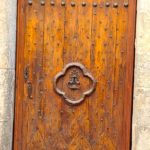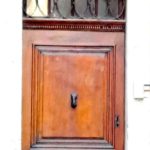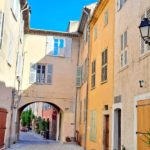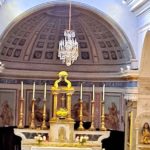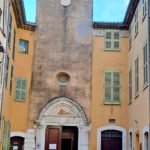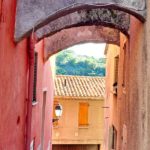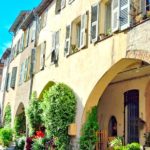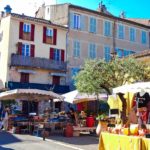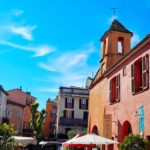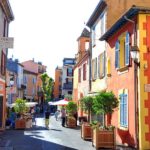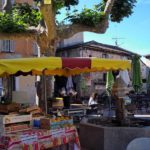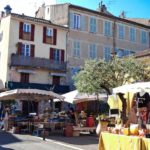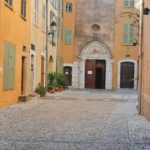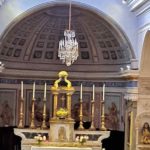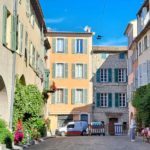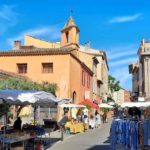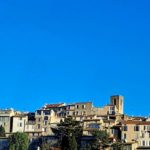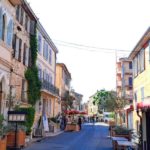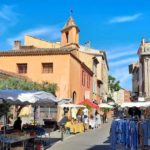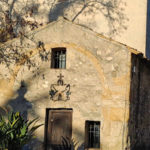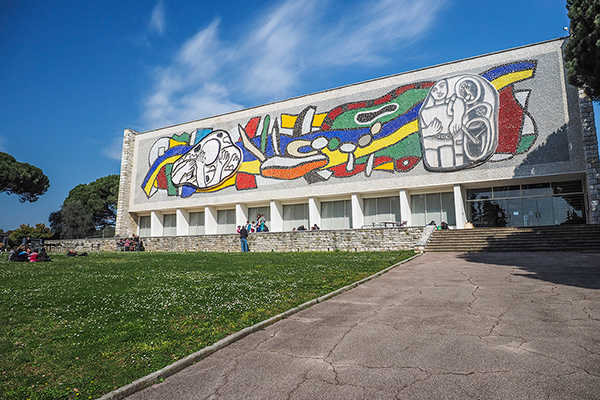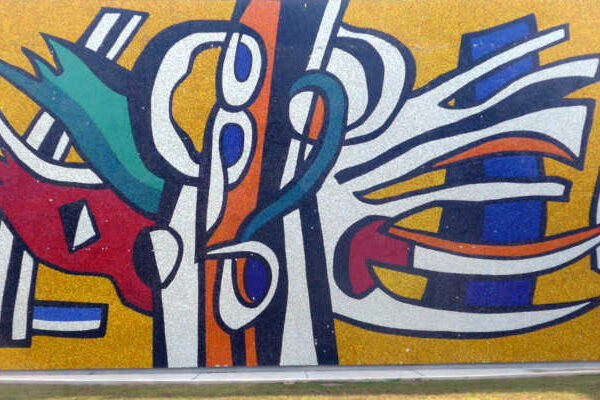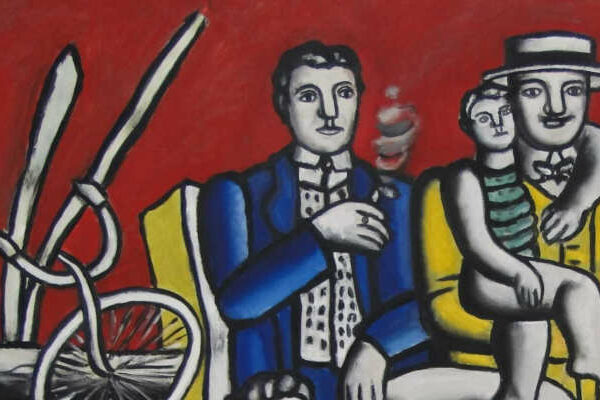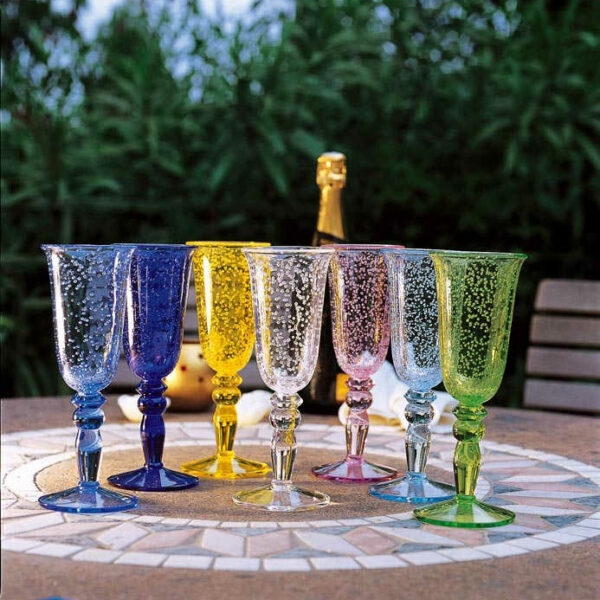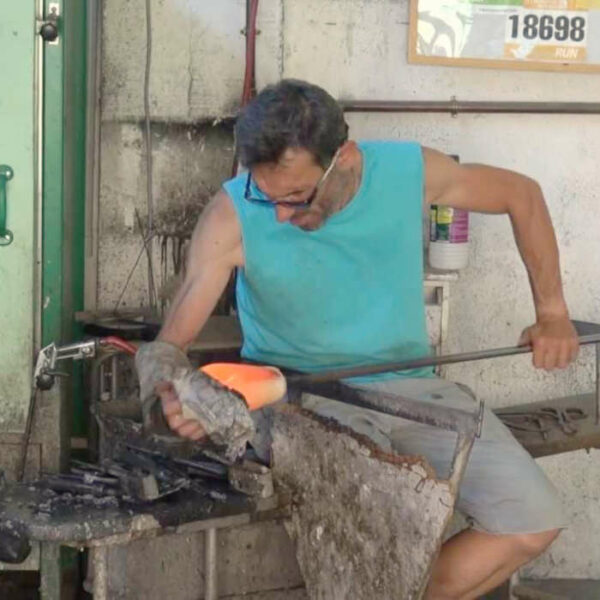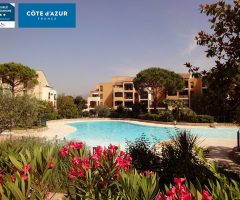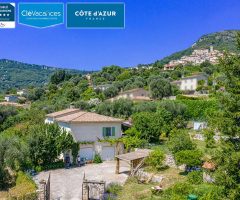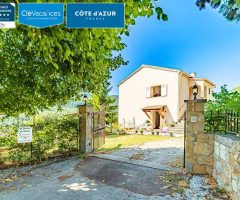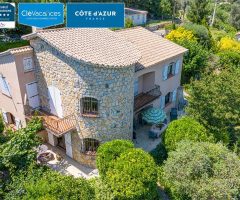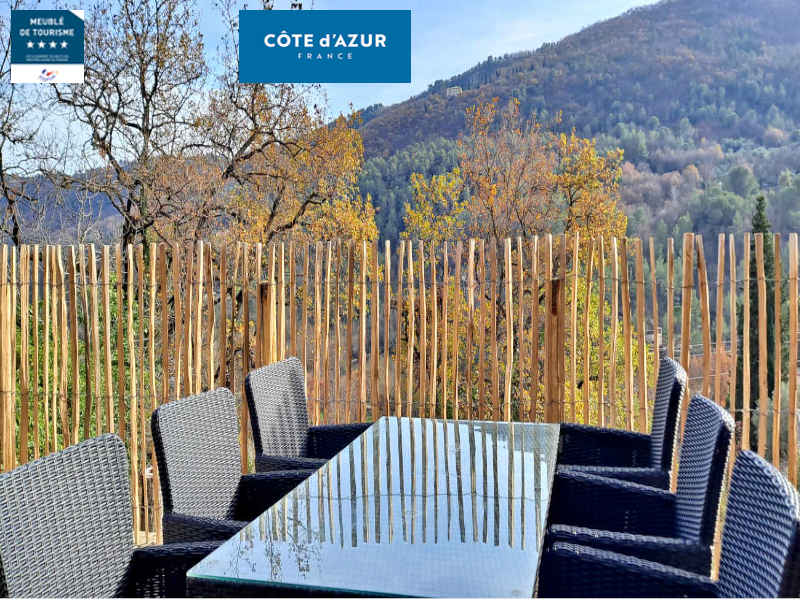Nestled between Antibes and Nice, nestled against the fragrant hills of the Côte d’Azur and facing the Mediterranean, Biot is a village that gracefully combines tradition and modernity. Renowned for its historic heritage, its artists’ studios and, above all, its world-famous glassworks, this small Provencal town appeals to travelers in search of authenticity, culture and beauty. In this text, we invite you to discover Biot from three angles: its history and identity, the sites and monuments to visit, and finally the fascinating world of the glassworks for which it is famous.
Discover Biot and its history
A village perched between sea and hills
Biot is only a few kilometers from the sea, but its historic heart, perched on a hill, retains the typical allure of Provence’s medieval villages. Its cobbled streets, houses with colorful shutters, vaulted passageways and small flower-filled squares bear witness to a timeless Mediterranean art of living.
Ancient origins
Biot’s history dates back to antiquity. The area was occupied as early as Roman times: excavations have uncovered the remains of villas and workshops. The Roman presence can be explained by the agricultural wealth of the surrounding hills and the proximity of the sea, which favored trade.
The Middle Ages and the imprint of the Knights Templar
In the XIIᵉ century, the village was entrusted to the Knights Templar, then, after the dissolution of the order, to the Hospitallers of St. John of Jerusalem. The latter developed an efficient agricultural organization, leaving a lasting imprint on local architecture and toponymy.
Modern times and upheaval
In the XVIᵉ and XVIIᵉ centuries, Biot fell victim to invasions, famines and epidemics. But the village recovered thanks to the gradual development of new craft activities, notably the manufacture of earthenware jars, exported throughout the Mediterranean basin.
Biot in the XXᵉ century: the artistic boom
The real turning point came in the XXᵉ century, when artists, seduced by the village’s light and atmosphere, moved here. Fernand Léger chose Biot to spend his last years, and the national museum dedicated to him perpetuates his memory. It was also at this time that Éloi Monod invented bubble glass, which made Biot internationally famous.
What to see in Biot
The medieval village
The heart of Biot is a labyrinth of steep, narrow streets. Discover the Place des Arcades, cobbled streets like Rue Saint-Sébastien, and ancient gateways like Porte des Tines.
Sainte-Marie-Madeleine church
Built in the XVᵉ century, it houses an altarpiece attributed to Louis Bréa. The building blends Romanesque, Gothic and Baroque influences.
The Fernand Léger National Museum
Inaugurated in 1960, it houses the world’s largest collection of Fernand Léger’s works, including paintings, monumental mosaics and ceramics.
Art galleries and studios
Biot is a veritable artists’ village. Contemporary galleries, ceramics and glass workshops punctuate the visitor’s discovery.
The surrounding nature
The hills, the river Brague and the nearby beaches of Antibes and Villeneuve-Loubet offer an exceptional natural setting to complete the visit.
Biot glassworks
An invention that changed the history of the village
In the 1950s, Éloi Monod perfected the bubble glass technique. This innovation ensured the village’s craft renaissance and worldwide renown.
Unique know-how
Bubble glass is distinguished by its regular bubbles, rich colors and mouth-blown finesse.
Biot’s great glassworks
Verrerie de Biot, founded in 1956, remains the most emblematic. But other workshops, such as Verrerie du Val de Pomme, offer innovative contemporary creations.
A living experience for visitors
Visitors can watch glass-blowing demonstrations, or even take part in workshops to create their own piece of glass.
To prepare your visit to Biot
Biot Tourist Office: 4, chemin neuf – 04.93.65.78.00
Share this article on social networks

